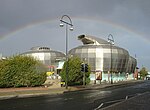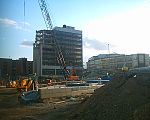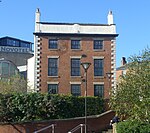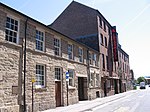Cultural Industries Quarter

The Cultural Industries Quarter is a district in the city centre of Sheffield, England, and one of the eleven Quarters designated in the 1994 City Centre Strategy. It is roughly triangular in shape, and is bound by Howard Street, Sheaf Square and Suffolk Road to the north-east, St Mary's Road to the south and Eyre Street and Arundel Gate to the north-west, with Granville Square in the south-east. The name given reflects the intention to create a cluster of music, film and science-based businesses in the area.Organisations based in the area include: Showroom/Workstation Red Tape Music Studios Leadmill nightclub and venue Sheffield Hallam University and its Students' Union (former National Centre for Popular Music) Sheffield Institute of Art Gallery Sheffield Live Site Gallery - art gallery Spearmint Rhino CBC Computer Systems LtdThe Sheffield Doc/Fest is held around the CIQ each June.
Excerpt from the Wikipedia article Cultural Industries Quarter (License: CC BY-SA 3.0, Authors, Images).Cultural Industries Quarter
Arundel Gate, Sheffield City Centre
Geographical coordinates (GPS) Address Nearby Places Show on map
Geographical coordinates (GPS)
| Latitude | Longitude |
|---|---|
| N 53.378 ° | E -1.466 ° |
Address
Sheffield Hallam University City Campus
Arundel Gate
S1 2FN Sheffield, City Centre
England, United Kingdom
Open on Google Maps









